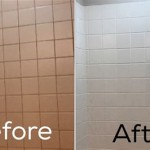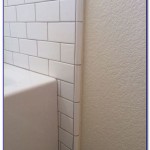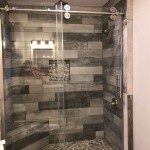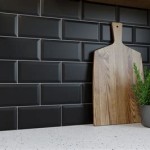Installing Vinyl Flooring Over Asbestos Tile: A Comprehensive Guide
The presence of asbestos in older buildings is a common concern, particularly when undertaking renovation projects. Asbestos, a naturally occurring mineral, was widely used in construction materials for its fire-resistant and insulating properties. One such material is asbestos-containing floor tile, often found in homes built before the 1980s. Disturbing these tiles during removal can release asbestos fibers into the air, posing a significant health risk. Therefore, covering asbestos tile with a new flooring material, like vinyl, is frequently considered a safer and more practical approach.
This article provides a detailed guide on how to install vinyl flooring over existing asbestos tile. It outlines the necessary precautions, preparation steps, installation techniques, and considerations for ensuring a safe and durable flooring solution. The information provided is intended for homeowners and professionals who are contemplating this type of project. However, it is crucial to emphasize that this guide is not a substitute for professional advice. Consulting with a qualified asbestos abatement specialist and flooring installer is highly recommended before proceeding with any work.
Before commencing any project involving potential asbestos-containing materials, it is crucial to identify positively whether asbestos is present. This requires laboratory testing of a sample of the tile by a certified asbestos testing facility. Visual inspection alone is insufficient to confirm the presence of asbestos. Assuming that older floor tiles contain asbestos is a common practice, but confirmation through testing is always recommended to ensure the correct safety measures are taken.
If testing confirms the presence of asbestos, it is vital to consult with an asbestos abatement professional. They can provide guidance on the best course of action, taking into account local regulations and the specific circumstances of the project. In some jurisdictions, professional asbestos removal is legally required, regardless of the scope of the work. Even if removal is not mandatory, professional abatement offers the safest and most thorough solution for eliminating the asbestos hazard. Covering the asbestos tile is often a permitted solution, but must comply with local regulations.
Encapsulation, the process of sealing the asbestos-containing material to prevent the release of fibers, is the underlying principle behind covering asbestos tile with vinyl flooring. By creating a barrier between the original tiles and the living space, the risk of exposure to asbestos is significantly reduced. However, the effectiveness of this encapsulation hinges on proper preparation and installation techniques. Any damage to the existing tiles or the new flooring could compromise the integrity of the encapsulation and potentially release asbestos fibers.
Preparing the Asbestos Tile Surface
Proper preparation is the cornerstone of a successful vinyl flooring installation over asbestos tile. The existing surface must be clean, level, and stable to ensure the new flooring adheres correctly and provides a durable, long-lasting finish. Failure to adequately prepare the surface can lead to problems such as unevenness, cracking, and delamination of the vinyl flooring.
The first step is to thoroughly clean the existing asbestos tile floor. Use a mild detergent and water solution to remove any dirt, grease, wax, or other contaminants. Avoid using harsh chemicals or abrasive cleaners, as these could damage the tiles or leave behind residues that interfere with adhesion. Rinse the floor thoroughly with clean water and allow it to dry completely – this may take several hours, or even overnight, depending on humidity levels.
Next, carefully inspect the asbestos tile floor for any loose, cracked, or damaged tiles. These must be addressed before installing the vinyl flooring. Loose tiles should be re-glued using an appropriate adhesive, specifically designed for bonding to asbestos-containing materials. Ensure the adhesive is compatible with both the existing tile and the new vinyl flooring. Cracked or damaged tiles should be repaired with a patching compound formulated for floor repairs. Follow the manufacturer's instructions carefully, allowing the compound to dry and cure completely before proceeding.
If there are significant height variations between the tiles or if the floor is uneven overall, a self-leveling compound may be necessary. This will create a smooth, level substrate for the vinyl flooring, ensuring a professional-looking finish. Apply the self-leveling compound according to the manufacturer's instructions, taking care to ensure it flows evenly and covers the entire surface. Allow it to dry and cure completely before proceeding.
Once the floor is clean, repaired, and leveled, apply a primer specifically designed for use over existing flooring. The primer will enhance the adhesion of the vinyl flooring adhesive and help to seal the asbestos tile surface, further reducing the risk of fiber release. Choose a primer that is compatible with both the asbestos tile and the vinyl flooring adhesive. Apply the primer evenly, following the manufacturer's instructions, and allow it to dry completely before proceeding.
Selecting the Right Vinyl Flooring and Adhesive
The choice of vinyl flooring and adhesive is critical for the success of the project. Not all vinyl flooring products are suitable for installation over asbestos tile. The flooring must be durable, flexible, and resistant to moisture and temperature changes. The adhesive must be specifically formulated for bonding to both asbestos-containing materials and the chosen type of vinyl flooring.
Consider the type of vinyl flooring that best suits the needs and aesthetic preferences. Options include vinyl sheet flooring, luxury vinyl tile (LVT), and vinyl plank flooring. Vinyl sheet flooring offers a seamless surface, reducing the risk of moisture penetration. LVT and vinyl plank flooring provide the look of tile or wood, but with the added durability and water resistance of vinyl. Each type has its own installation requirements, so it's important to choose a product that is compatible with the existing floor and the skill level of the installer.
Thick, resilient vinyl flooring is generally preferred for installation over asbestos tile. Thicker flooring provides better insulation and cushioning, and it is less likely to telegraph any imperfections in the underlying surface. Look for flooring with a high wear layer, which will protect the surface from scratches and scuffs. Check the manufacturer's specifications to ensure the flooring is suitable for installation over existing flooring.
The adhesive is just as important as the flooring itself. Choose an adhesive that is specifically formulated for bonding to asbestos-containing materials. These adhesives typically have a higher solids content and stronger bond strength than standard flooring adhesives. They are also designed to resist moisture and temperature changes, which can cause the adhesive to fail over time. Contact the flooring manufacturer or a flooring supply specialist for recommendations on appropriate adhesives.
Always read and follow the manufacturer's instructions for both the vinyl flooring and the adhesive. This includes specific guidelines on application rates, drying times, and temperature and humidity requirements. Using the wrong adhesive or applying it incorrectly can result in poor adhesion, bubbling, or delamination of the flooring. It can also compromise the encapsulation of the asbestos tile.
Installing the Vinyl Flooring
The installation process will vary depending on the type of vinyl flooring chosen, but some general principles apply to all installations over asbestos tile. Proper planning, careful measurements, and precise cutting are essential for a professional-looking and durable result.
Before beginning the installation, acclimate the vinyl flooring to the room temperature for at least 48 hours. This will allow the flooring to expand or contract, preventing problems later on. Lay the flooring out in the room to get a sense of the layout and identify any potential challenges, such as awkward angles or obstacles.
Apply the adhesive to the prepared asbestos tile surface according to the manufacturer's instructions. Use a notched trowel of the appropriate size to ensure an even application. Work in small sections to prevent the adhesive from drying out before the flooring is installed. Carefully position the vinyl flooring over the adhesive, starting at one edge of the room and working your way across. Use a roller to press the flooring firmly into the adhesive, removing any air bubbles and ensuring a strong bond.
When installing vinyl sheet flooring, take extra care to ensure a seamless installation. Overlap the seams slightly and then use a seam roller to create a tight, invisible bond. Use a heat gun to soften the vinyl at the seams, if necessary, and then trim away any excess material. For LVT and vinyl plank flooring, follow the manufacturer's instructions for interlocking or gluing the individual pieces together.
Once the vinyl flooring is installed, allow the adhesive to cure completely before walking on the floor. This may take 24 to 72 hours, depending on the type of adhesive used. During this time, protect the flooring from heavy traffic and moisture. Install baseboards and trim to cover the edges of the flooring and provide a finished look. Properly dispose of any leftover materials, following local regulations for asbestos-containing waste.
By meticulously following these steps and taking appropriate safety precautions, homeowners and professionals can successfully install vinyl flooring over asbestos tile, creating a safer and more aesthetically pleasing living space. Remember, consulting with experts and adhering to local regulations are paramount throughout the process of handling potential asbestos-containing materials.

Can I Put A New Floor Over Asbestos Tiles Branch Environmental

How To Waterproof A Basement

The Truth About Asbestos Vinyl Flooring Chemcare

What Flooring Should I Use Over Old Asbestos Tiles

How To Install Tile Over Asbestos Ehow

How To Seal Asbestos Tiles Hunker

Installing Hardwood Over Asbestos Tiles Homeadvisor

How Do I Paint Asbestos Flooring Perfectprimer

The Truth About Asbestos In Vinyl Flooring

Can You Lay Tile Over Linoleum Rubi Blog Usa
Related Posts








